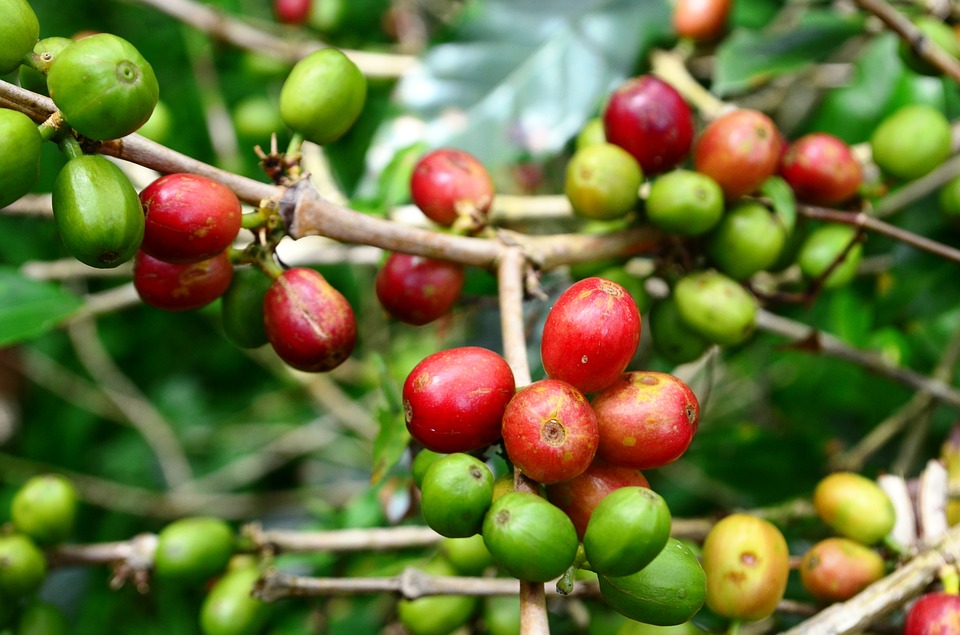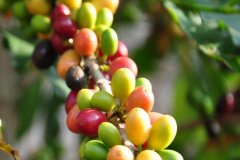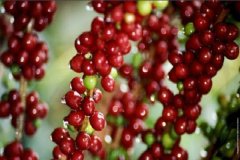Costa Rica coffee beans Las Lajas estate black honey processing coffee beans how to drink
For professional baristas, please follow the coffee workshop (Wechat official account cafe_style)
SHB La Lajas Manor in Costa Rica Black Honey treatment Las Lajas Estate Black Honey
Among the exquisite sun and honey treatments that are quite popular in Costa Rica, La Lajas Manor is one of the first estates to begin systematic research and treatment, and has been a favorite coffee farm for global buyers for many years. La Lajas Manor is now jointly run by the third-generation manor owner Francisca Cubillo and his wife Oscar. The estate is located in the Central Valley producing area (Central Valley), not far from the capital, quite close to the Poas Volcano volcano, at an altitude of 1250 to 1500 meters, with an annual output of about 55200 kilograms.
Many years ago, Francesca, the owner of the manor, had been hoping to improve the flavor of the coffee in the manor. at that time, the vast majority of coffee farmers in Costa Rica generally adopted the traditional washing method to meet the needs of the American and European markets. so the manor owner began to study and improve a lot of equipment in the manor to better meet the needs of sun and honey-treated coffee. During the harvest stage, the landowner used the sweetness detector (BRIX) to screen the red fruits of coffee up to the standard, and set up his own washing treatment station for coffee treatment, and finally placed it on the African scaffolding for follow-up exposure.
In the coffee processed by La Lajas Manor, the manor divides honey-treated and sunburned coffee into different items according to its flavor. Costa Rican farmers mostly control the amount of residual flesh through peeling machines at washing stations, but La Lajas decided to do it in a different way. In other words, the highest percentage of the pulp is retained but the exposure and turning time on the African scaffolding is controlled to show different coffee flavors. in the honey treatment, the manor divides the coffee into yellow honey, red honey and black honey.

Important Notice :
前街咖啡 FrontStreet Coffee has moved to new addredd:
FrontStreet Coffee Address: 315,Donghua East Road,GuangZhou
Tel:020 38364473
- Prev

Costa Rican Coffee Dota Boutique Coffee Region Conqueror Coffee Bean Flavor Taste Characteristics Description
Weixin Official Accounts cafe_style) Costa Rica SHB La Minita El Conquistador Country: Costa Rica Region: Multi-tower Elevation: 1200-1900 m Processing method: Washing grade: SHB Variety: Kadura, Kaduyi Flavor description: Conquistador can feel rich at the entrance
- Next

La Lajas Manor's unique honey-treated coffee beans classified as black pearl and black soul coffee beans
Communication of professional baristas Please pay attention to the coffee workshop (official Wechat account cafe_style) in the coffee processed by the Laslajas manor, the landowner divides the honey-treated and sunburned coffee into a variety of different items according to the flavor. In terms of honey treatment, Costa Rican farmers mostly control the amount of residual flesh through peeling machines at washing stations, but Las Raha
Related
- Detailed explanation of Jadeite planting Land in Panamanian Jadeite Manor introduction to the grading system of Jadeite competitive bidding, Red bid, Green bid and Rose Summer
- Story of Coffee planting in Brenka region of Costa Rica Stonehenge Manor anaerobic heavy honey treatment of flavor mouth
- What's on the barrel of Blue Mountain Coffee beans?
- Can American coffee also pull flowers? How to use hot American style to pull out a good-looking pattern?
- Can you make a cold extract with coffee beans? What is the right proportion for cold-extracted coffee formula?
- Indonesian PWN Gold Mandrine Coffee Origin Features Flavor How to Chong? Mandolin coffee is American.
- A brief introduction to the flavor characteristics of Brazilian yellow bourbon coffee beans
- What is the effect of different water quality on the flavor of cold-extracted coffee? What kind of water is best for brewing coffee?
- Why do you think of Rose Summer whenever you mention Panamanian coffee?
- Introduction to the characteristics of authentic blue mountain coffee bean producing areas? What is the CIB Coffee Authority in Jamaica?

